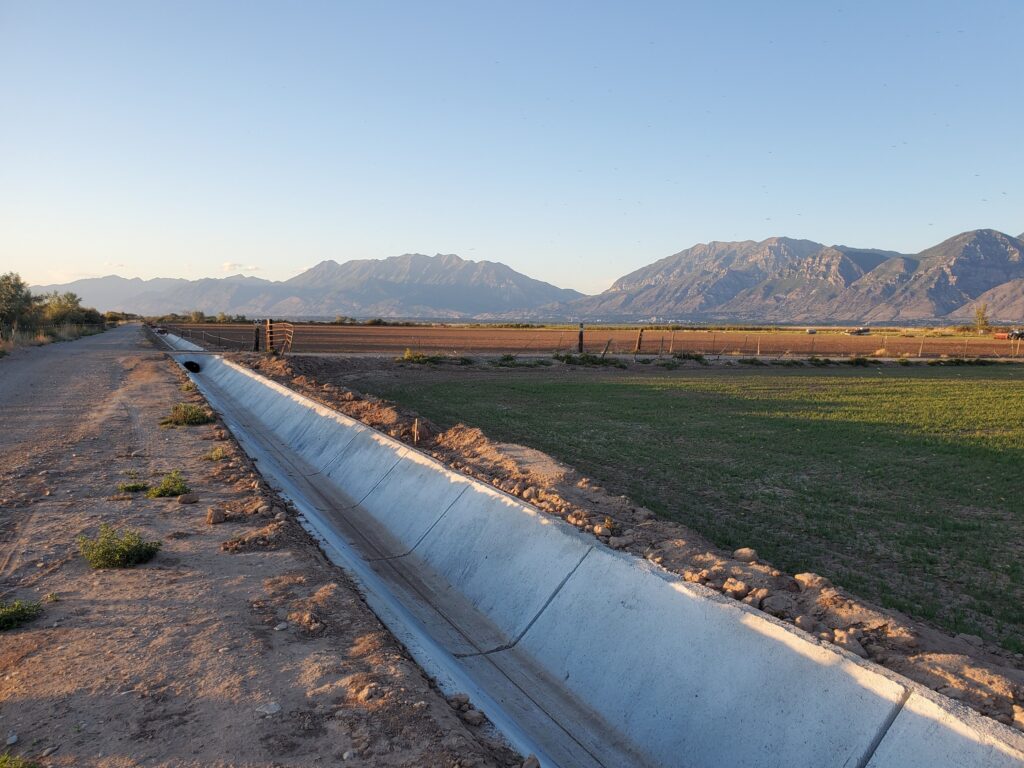Initial Consultation

Russell Jones, owner of Jones Concrete will find time to meet you at the proposed ditch location. He will bring his decades of experience to find the best design for your needs.
Ditchpad work
While Jones Concrete can build pads, it is often performed by other contractors. The ditch pad needs to be built of clean soil (no rocks or debris). It is best to build the pad in layers, compacting each layer, and allow the pad time to settle. The pad needs to be about a foot above the field and a minimum of 12 feet wide. It is best to have the pad flat across and follow the grade of the proposed ditch without dips or bumps.
Trenching

Once the ditch pad is ready, the fun begins! A string is laid out next to the ditch pad. The string will guide the path of the trencher and will tell the trencher how deep to dig the ditch. This will result in a level, smooth ditch cut out of the pad.
Next, the outlets and the ends of the ditch are dug out with a backhoe and shovels. Cut-off walls are dug along the channel to protect headgates from being undercut. Outlet forms, rebar, and wire mesh are distributed and prepared for the day of the pour.
Ditchlining by Slip-forming

Slip forming means instead of a set of forms that are setup at one location, the form slips along a path and forms the concrete as it slips by. We also call our slip form a ‘boat’. The boat is placed in the ditch and filled with concrete. As it is pulled along, the headgates and outlets are installed and finished into place. Expansion marks are added at approximately every 10 feet.
A wax is sometimes added to assist the curing of the concrete. The outlets and ends are finished by hand. While it is weather-dependent, the concrete will setup within an hour or two and the forms used in the outlets will be removed. The ditch will be hard enough to walk on and irrigate in about a day, depending on the conditions.
Attaching Slides
After the concrete is poured and set, the final thing left for us is to attach slides and stems to the headgates and place tins in the outlets. The ditch is then ready to convey and control irrigation.

Field Work
Once the ditch has been completed, many farmers take that time to level their fields to the new ditch, if it wasn’t done during the ditch pad preparation. This may level out any rough spots created during construction and will remove poor field conditions that build up over years of irrigation.